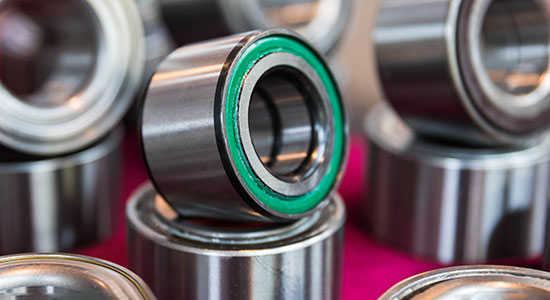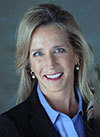
Wisconsin’s leadership in manufacturing since the industrial age is a source of pride. But in today’s global economy, it can open manufacturing clients to additional risks. Technological advancements made by Wisconsin manufacturers in electrical equipment, metal, and other sectors lead industry trends in both productivity and sustainability while improving global and national economies. Wisconsin’s manufacturing supply chain keeps global production lines humming, demonstrating a healthy worldwide demand for the products made nearby.1 Clients that manufacture products in high demand or that have a significant share of the market are vulnerable to counterfeit and knockoff products.2
Emboldened in part by online commerce, counterfeiters have moved well beyond fake designer handbags. Almost no product category is immune. Counterfeit product and component-part manufacturers seek to capitalize on manufacturers’ sales by marketing deeply discounted, “fake” products to unknowing consumers, including downstream original equipment manufacturers (OEMs) or other users of component parts. These products are usually poorly manufactured, fail to comply with safety standards, and lack consumer protections or adequate product warnings. As such, these counterfeit products are likely to damage a manufacturer’s brand name and reputation and present significant risk of related personal-
injury and products-liability litigation.
The Rise of Counterfeiting and Its Costs
According to the Counterfeiting Intelligence Bureau, counterfeiting is a global problem that is rapidly expanding to account for $600 billion in losses worldwide.3 In the last two decades, counterfeiting has increased by more than 10,000 percent according to the International AntiCounterfeiting Coalition.4 That number is expected to increase, exponentially, over the next decade.5
 Beth Schneider Naylor, Notre Dame 1986, of Frost Brown Todd LLC, Cincinnati, holds law licenses in Wisconsin and Ohio. She provides national litigation management, representation before regulatory bodies, crisis management response, risk assessment and management, and preventive product-safety counseling to U.S. and foreign manufacturers and distributors. Georgia T. Connally contributed to this article.
Beth Schneider Naylor, Notre Dame 1986, of Frost Brown Todd LLC, Cincinnati, holds law licenses in Wisconsin and Ohio. She provides national litigation management, representation before regulatory bodies, crisis management response, risk assessment and management, and preventive product-safety counseling to U.S. and foreign manufacturers and distributors. Georgia T. Connally contributed to this article.
The negative effects on legitimate trade in the form of lost sales are obvious. Also important to note is that the increasing prevalence of counterfeit goods has yielded a corresponding rise in injuries and related litigation. Examples include counterfeit industrial parts in the airline, aerospace, and defense industries, which have been linked to injuries, accidents, and even plane crashes;6 and counterfeit brake pads made of compressed grass, woodchips, and cardboard, which have led to thousands of personal-injury claims, forcing brand-name manufacturers to incur costs to prove the products are fake.7 A 2012 U.S. Senate committee report on the armed services found some 1,800 cases of suspected counterfeit parts, some of which were installed on civilian aircraft.8
Overall, deaths resulting from counterfeit products bear an annual economic cost of more than $18 billion, with an additional $125 million spent annually on treating counterfeit product-related injuries.9
Litigating Products-Liability Claims Involving Counterfeit Products
Historically, the brand of a product provides consumers with some assurance as to a product’s quality and the manufacturer’s accountability. If counterfeit products cause injury or damage, they are easily mistaken for the brand-name products. Then claims might be asserted against innocent manufacturers instead of counterfeiters, which typically have limited assets and low profile in the United States.
In these cases, quick and accurate product identification is crucial. However, it is rarely easy, especially in the litigation context. In some cases, the accused, but innocent, manufacturer does not have immediate access to the product; in other cases, the product has been destroyed in the accident or has not been preserved. Finally, if the counterfeit is a close imitation or appears identical to the genuine product, significant resources must be expended to demonstrate that the product is counterfeit.
Even if a court ultimately finds that a product is a fake and a manufacturer succeeds in avoiding liability, responding to and managing counterfeit products-liability claims is a costly endeavor. Moreover, litigating these claims causes brand-name manufacturers unquantifiable harm – irreversibly tarnishing their reputation and goodwill. The long-term costs of counterfeit products can have immense and detrimental effects on genuine, brand-name product manufacturers.
Preventive Steps
Conventional quality-control efforts often are inadequate and unsuccessful against today’s counterfeiters. Lawyers should provide guidance on measures to stay alert and aggressively combat the negative economic and reputational effects of counterfeit goods. An in-depth strategic program for manufacturing clients geared toward discovering and thwarting counterfeiters includes some combination of the following:
-
Protect the client’s intellectual property, including the unique design features or physical appearance of the product, register the brand name and trademark, and be diligent and strategic about IP protection globally.
-
Suggest that the client’s product development and design teams consider how products can be made harder to replicate. This also might include improving the ability to identify a genuine product through unique markings or proprietary electronic devices.
-
Draft agreements with vendors, suppliers, and distributors that strongly disincentivize both knowing and unknowing contamination of the supply chain with counterfeit products and component parts, and distribution or sale of knockoff products.
-
Advise the client to actively monitor the marketplace for counterfeit and knockoff products.
-
Assist the client in developing a corporate anticounterfeiting strategy that includes a multifaceted approach using legal, business intelligence, and public relations resources.
Conclusion
Manufacturers, industries, and products vary widely. Each manufacturing client needs guidance to develop an individualized solution for combatting counterfeit and knockoff products in its market and to reduce its brand’s exposure to counterfeit product liability.
Meet Our Contributors
What led you to the law as a profession?
 Growing up in a family of three girls during the 1960s and 1970s, society was changing for women. My father, who had come from very humble beginnings and put himself through law school at night with a full-time job and small children at home, took great pride in being a lawyer – a counselor and advisor helping people.
Growing up in a family of three girls during the 1960s and 1970s, society was changing for women. My father, who had come from very humble beginnings and put himself through law school at night with a full-time job and small children at home, took great pride in being a lawyer – a counselor and advisor helping people.
In the early 1970s, he went to Washington, D.C., to argue a zoning case before the U.S. Supreme Court. He came home with a T-shirt for me that said, “A woman’s place is in the House … and the Senate.” From then on, I knew I had been selected to be a lawyer.
Both of my sisters are nurses, currently on the front lines of the COVID-19 response. My father began slowing down from his practice at age 75 and retired at 80. He tells me every day that he misses practicing law.
Beth Schneider Naylor, Frost Brown Todd LLC, Cincinnati, Ohio.
Become a contributor! Are you working on an interesting case? Have a practice tip to share? There are several ways to contribute to Wisconsin Lawyer. To discuss a topic idea, contact Managing Editor Karlé Lester at (800) 444-9404, ext. 6127, or email klester@wisbar.org. Check out our writing and submission guidelines.
Endnotes
1 In Wisconsin, https://inwisconsin.com/key-industries-in-wisconsin/manufacturing/.
2 Knockoff products are distinguishable from counterfeit products in that they imitate or copy the physical appearance of other products but do not copy the brand name or logo. For the purpose of this article, “counterfeit” is used to describe both types unless the distinction is essential.
3 Zurich Financial Servs. Ltd., Risktopics 1 (Jan. 2013); see also ICC-Counterfeiting Intelligence Bureau, Report on Trade Impacts.
4www.iacc.org.
5 U.S. Chamber of Commerce, Global Intellectual Property Center, Measuring the Magnitude of Global Counterfeiting 9 (2016).
6 Id. (citing P.E. Chaudhry & G.E. Walsh, An Assessment of the Impact of Counterfeiting in International Markets: The Piracy Paradox Persists, Colombia J. World Bus. (Fall 1996), p. 36; Inquiry Into Counterfeit Electronic Parts in the Department of Defense Supply Chain, Report of the Committee on Armed Services, U.S. Senate, 112th Cong., 2nd Sess. (May 21, 2012); Aerospace Indus. Ass’n, Counterfeit Parts: Increasing Awareness and Developing Countermeasures (2011)).
7 See, e.g., William Horobin & Greg Bensinger, L’Oréal, eBay Settle Dispute Over Counterfeit Goods, Wall St. J., Jan. 15, 2014.
8 U.S. Chamber of Commerce, supra note 5.
9 Id.
